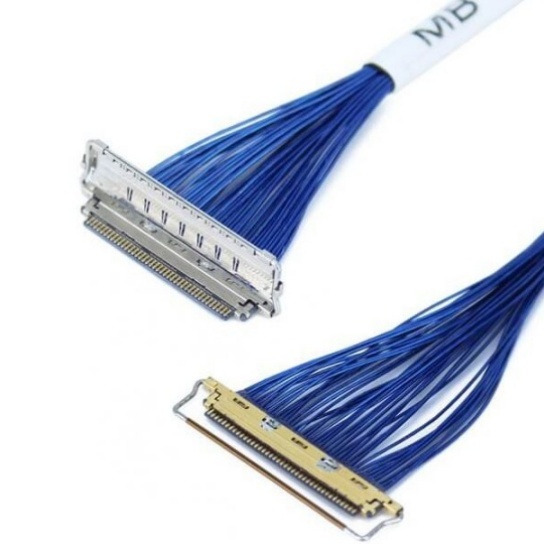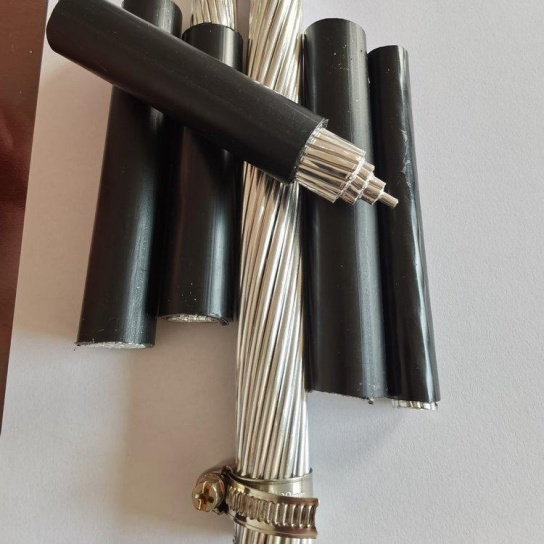The Advantages of Copper Alloys in Aerospace Cables
- Unmatched Electrical Conductivity
Copper alloys set the gold standard for efficient power transmission.
High Conductivity: Pure copper boasts a conductivity of 58 MS/m, while alloys like beryllium copper (CuBe) retain ~50 MS/m—far surpassing aluminum (35 MS/m) and composites (<10 MS/m).
Low Resistive Loss: In high-current systems (e.g., engine starters), copper’s low resistance minimizes voltage drop. For instance, a 20-meter copper cable carrying 500A loses just 2V, versus 5V for aluminum.
Superior High-Frequency Performance: Copper’s skin effect efficiency at high frequencies (up to 10 GHz) makes it ideal for avionics and radar systems.
2. Mechanical Durability in Extreme Conditions
Copper alloys withstand aviation’s harsh operational environments.
Temperature Resilience:
CuNi2SiCr (Corson alloy): Retains 90% tensile strength at 250°C, perfect for engine bay harnesses.
CuBe (C17200): Operates from -200°C to 300°C, outperforming polymer-insulated composites.
Vibration and Fatigue Resistance:
Copper’s ductility prevents cracking under cyclic stresses. NASA’s studies show copper cables endure 10⁷ vibration cycles without failure, compared to CFRP’s 10⁶ cycle limit.
Corrosion Resistance:
Phosphor bronze (C51000): Resists salt spray (per ASTM B117) for 1,000+ hours, critical for naval aircraft.
3. Proven Reliability and Safety
Decades of aviation history validate copper’s dependability.
Fire Safety:
Copper cables with PTFE insulation meet FAA 25.853 flammability standards, emitting <5% smoke density versus composites’ 15–20%.
Example: Boeing 737’s emergency systems use CuBe cables for fail-safe operation during fires.
EMI/RFI Shielding:
Copper’s natural shielding effectiveness (≥100 dB at 1 GHz) protects sensitive avionics. The F-35’s radar system relies on braided copper-shielded triaxial cables.
Arc Resistance:
Copper’s high melting point (1,085°C) prevents arcing failures in overload conditions, a key factor in FAA certification.
4. Cost-Effectiveness in Lifecycle Management
Copper alloys offer long-term economic advantages despite higher initial costs.
Longevity:
Copper cables in a DC-8 aircraft (1960s) remain operational after 60+ years, thanks to corrosion-resistant alloys.
Ease of Repair:
Field-repairable via standard soldering or crimping, unlike composites requiring specialized tools.
Recyclability:
Copper retains 95% value post-recycling, aligning with aviation’s push for circular economies. Over 80% of retired aircraft copper is reused.
5. Case Studies: Copper Alloys in Action
Lockheed Martin C-130J Super Hercules
Application: Power distribution in cargo bay and flight controls.
Alloy: CuBe (C17200) cables handle 200A loads with 0.5 mm² cross-sections, 30% smaller than aluminum equivalents.
Result: Zero in-flight electrical failures over 20 years of service.
Airbus A320neo
Hybrid System: Copper alloys dominate engine starter and landing gear circuits, while composites handle low-power signaling.
Performance: 99.98% electrical system reliability (per Airbus 2022 report).
Innovations Reinventing Copper Alloys
Recent advancements address historical limitations:
Nanostructured Copper:
Grain boundary engineering improves strength by 40% without sacrificing conductivity (e.g., NanoAL’s Cu-3Ag-0.5Zr).
Copper-Graphene Composites:
MIT-developed Cu-Gr wires achieve 65 MS/m conductivity with 50% weight reduction.
Anti-Corrosion Coatings:
Atomic layer deposition (ALD) of alumina extends service life in humid climates by 300%.
Standards and Specifications
Key aviation standards governing copper alloy cables:
MIL-DTL-17: Mandates CuBe for military coaxial cables.
SAE AS22759: Specifies CuNi2SiCr for high-temperature applications.
AMS 4533: Defines heat treatment protocols for aerospace-grade CuBe.
Challenges and Counterarguments
While composites gain ground, copper alloys still excel where performance is non-negotiable:
Ultra-High Current Systems: Composites can’t match copper’s 500A+ capacity.
Cryogenic Environments: Copper’s ductility at -200°C outperforms brittle composites.






